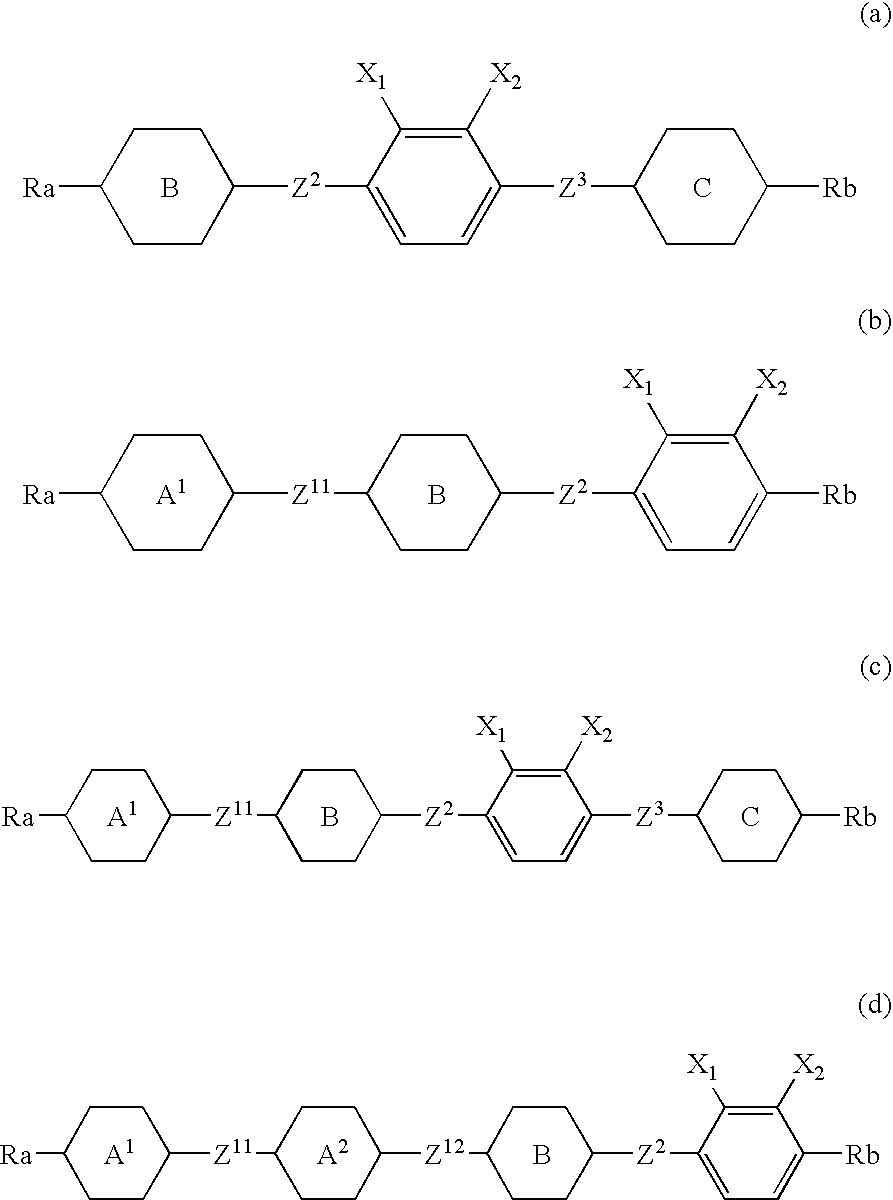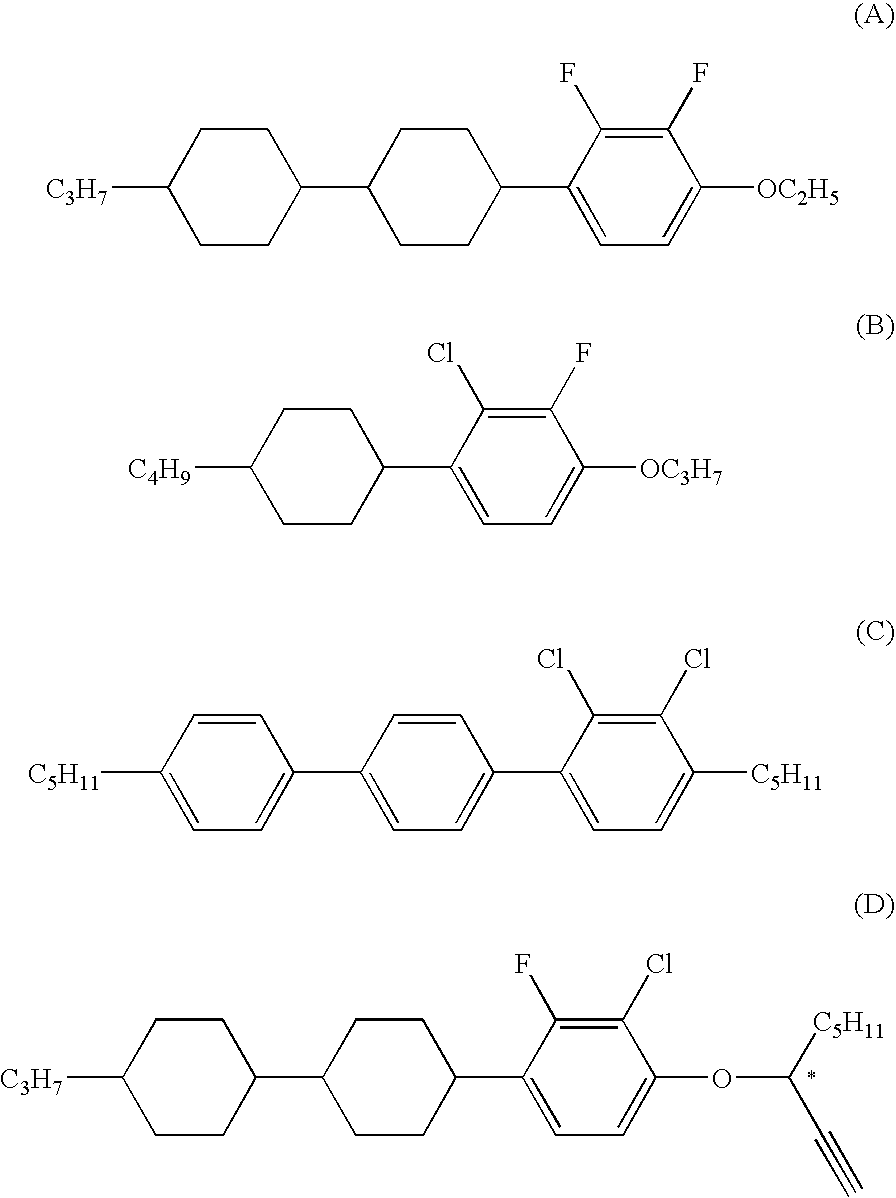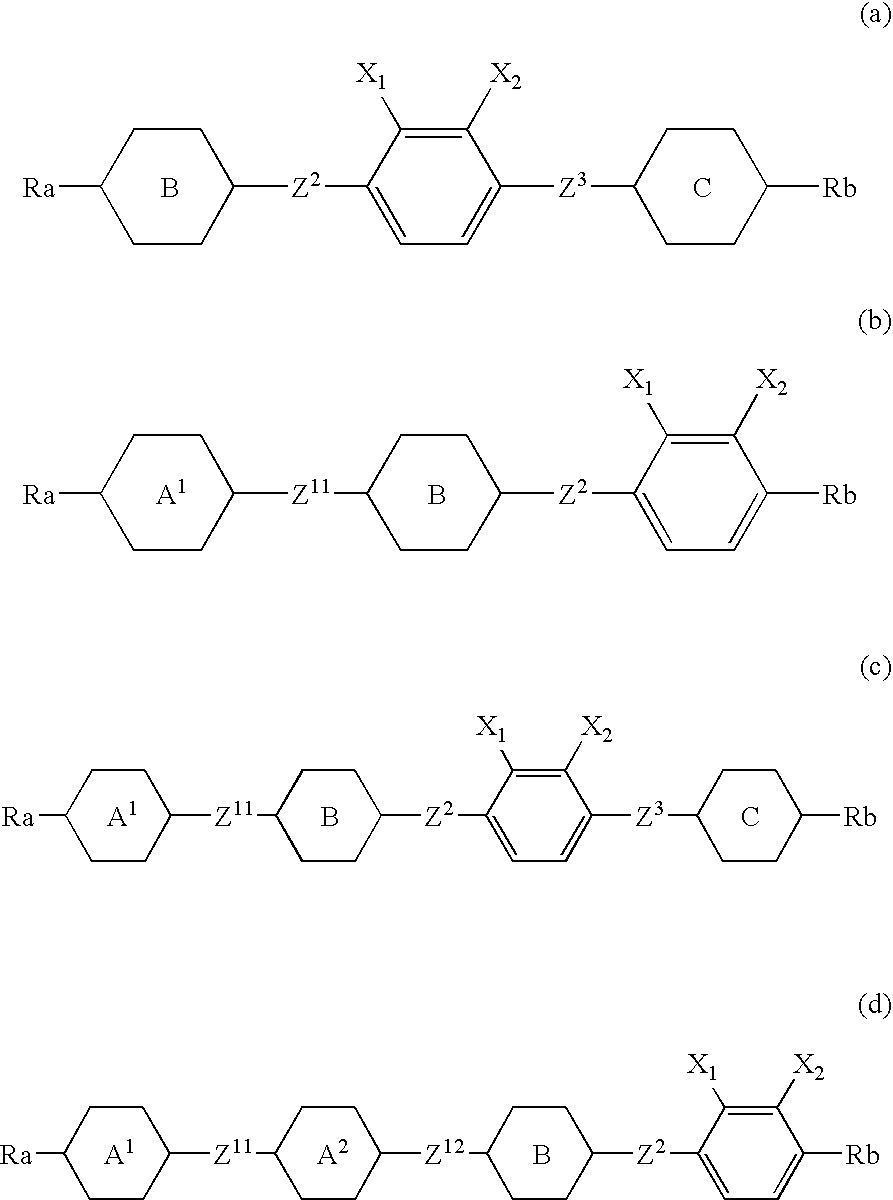Chlorofluorobenzene liquid crystal compound, liquid crystal composition, and liquid crystal display device
a liquid crystal compound and fluorobenzene technology, applied in the field of liquid crystal compound, liquid crystal composition, liquid crystal display device, can solve the problems of poor compatibility of compound (a) with other compounds in the low temperature region, large viscosity, response time, etc., and achieve good compatibility and good compatibility
- Summary
- Abstract
- Description
- Claims
- Application Information
AI Technical Summary
Benefits of technology
Problems solved by technology
Method used
Image
Examples
example 1
Synthesis of 1-bromo-3-chloro-4-ethoxy-2-fluorobenzene (C2)
[0226]
First Step
[0227]550 g of hydrochloric acid was added to a reactor having 270 g of water placed therein, and 129 g of 2,6-difluoroanyline (b1) was further added thereto, followed by stirring for 30 minutes at 60° C. Thereafter, the mixture was cooled to −10° C., and 192.5 g of a 37.6% sodium nitrite aqueous solution was added dropwise thereto over 30 minutes in a temperature range of −10 to −5° C., followed by stirring for 30 minutes at −10° C. The resulting reaction mixture was added to another reactor having 122 g of 30% hydrochloric acid and 22 g of cuprous chloride placed therein over 90 minutes in a temperature range of 25 to 30° C., followed by stirring for 30 minutes in that temperature range. A reaction mixture obtained by the reaction was subjected to steam distillation. The resulting organic phase was washed with water in three times and then dried to obtain 124 g of 2-chloro-1,3-difluorobenzene (b2).
Second St...
example 2
Synthesis of 1-bromo-2-chloro-4-ethoxy-3-fluorobenzene (C12)
[0232]
First Step
[0233]728 g of 3-chloro-2-fluoroaniline was added to a reactor having 6,860 g of 30.6% sulfuric acid placed therein, followed by stirring for 30 minutes at 80° C. Thereafter, the mixture was cooled to −10° C., and 952 g of a 37.0% sodium nitrite aqueous solution was added dropwise thereto over 90 minutes in a temperature range of −10 to −5° C., followed by stirring for 30 minutes in that temperature range. The resulting reaction mixture was added to another reactor having 4,100 g of 51.2% sulfuric acid, 1,500 g of copper sulfate and 3,000 mL of toluene placed therein over 6 hours in a temperature range of 80 to 85° C., followed by stirring for 30 minutes in that temperature range. The resulting reaction mixture was cooled to a temperature range of 70 to 75° C. and left at rest to separate into two layers, i.e., an organic layer and an aqueous layer, and the organic layer was collected. The aqueous layer was ...
example 3
[0238]The following compounds (C1), (C3) to (C11) and (C13) to (C20) were synthesized in the same method as the synthesis methods described in Examples 1 and 2. The compounds (C2) and (C12) obtained in Examples 1 and 2 are also described in the following. The values shown with the compounds are values measured in the aforementioned methods, in which “m.p.” shows a melting point, and “b.p.” shows a boiling point.
[0239]
[0240]Examples of the liquid crystal compound (1) of the invention produced by using the compounds (C1) to (C20) synthesized in Examples 1, 2 and 3 will be described.
PUM
 Login to View More
Login to View More Abstract
Description
Claims
Application Information
 Login to View More
Login to View More - R&D
- Intellectual Property
- Life Sciences
- Materials
- Tech Scout
- Unparalleled Data Quality
- Higher Quality Content
- 60% Fewer Hallucinations
Browse by: Latest US Patents, China's latest patents, Technical Efficacy Thesaurus, Application Domain, Technology Topic, Popular Technical Reports.
© 2025 PatSnap. All rights reserved.Legal|Privacy policy|Modern Slavery Act Transparency Statement|Sitemap|About US| Contact US: help@patsnap.com



